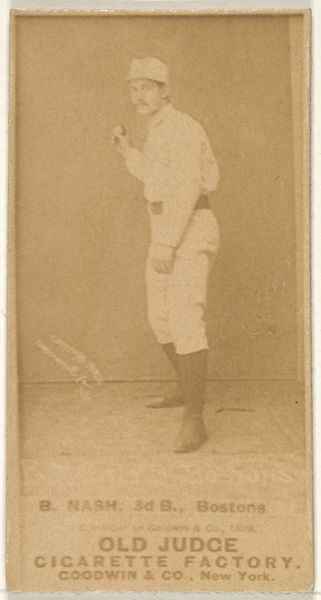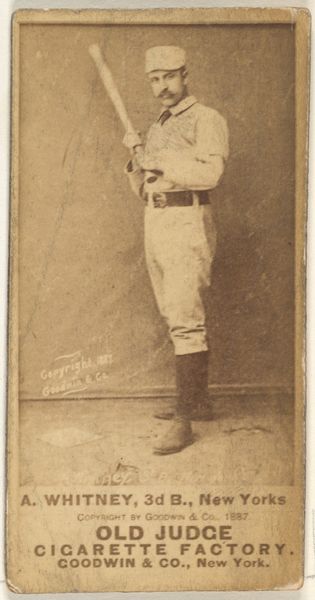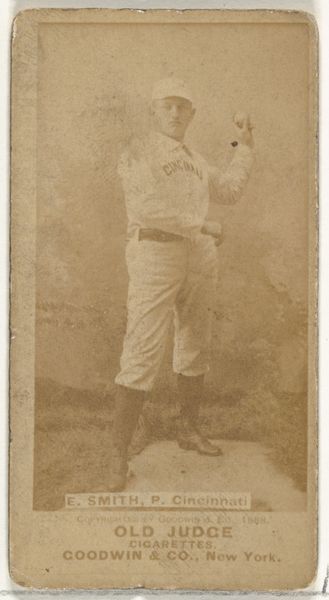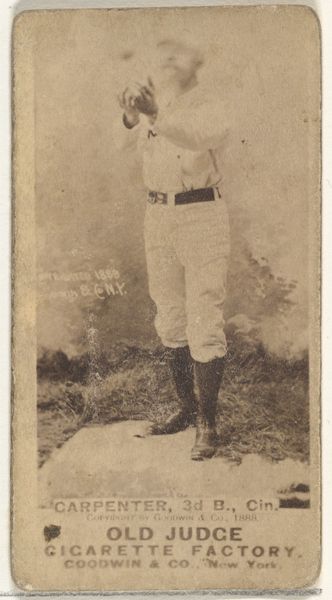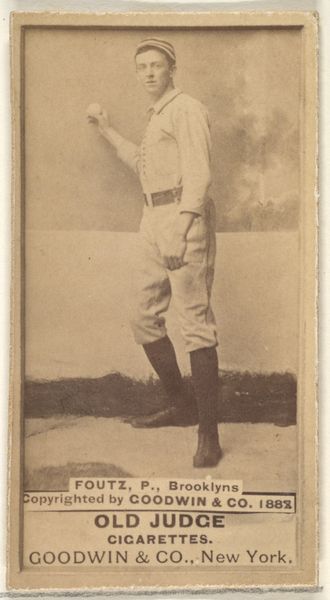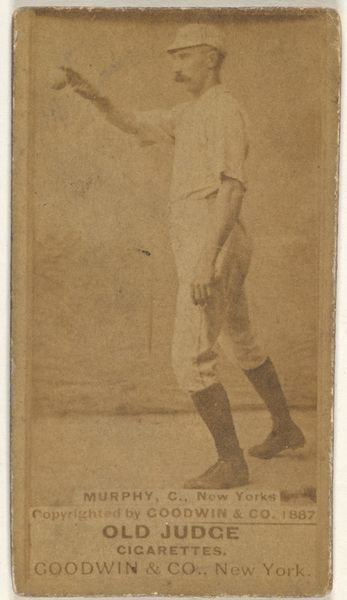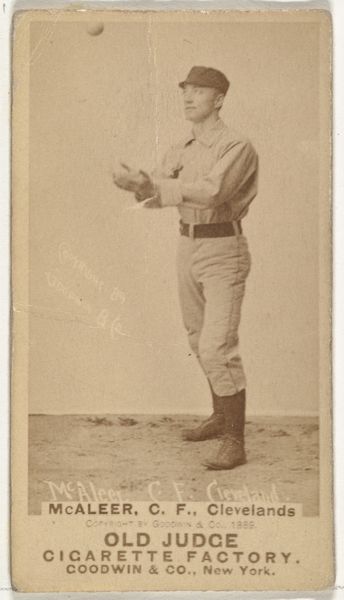
Jimmy "Loafer" McAleer, Center Field, Cleveland, from the Old Judge series (N172) for Old Judge Cigarettes 1888 - 1889
0:00
0:00
drawing, print, photography
#
portrait
#
drawing
# print
#
baseball
#
photography
#
men
Dimensions: sheet: 2 11/16 x 1 3/8 in. (6.9 x 3.5 cm)
Copyright: Public Domain
Curator: Here we have an 1888-89 baseball card produced by Goodwin & Company, part of the "Old Judge" series for Old Judge Cigarettes, now residing at the Metropolitan Museum of Art. The subject is Jimmy "Loafer" McAleer, center fielder for Cleveland. Editor: My first thought is that it has a very nostalgic quality, with that sepia tone invoking a sense of early Americana. His pose almost feels rehearsed or stoic for the period. Curator: That sepia is directly tied to the photographic processes available at the time—a silver gelatin printing process on albumen paper, then reproduced as these affordable cards, inserted into cigarette packs. Think of the massive industrial apparatus required to mass-produce these things, connecting consumer habits, image making, and the celebrity culture that was then emerging with the rise of professional sports. Editor: Right, and baseball itself as a symbolic marker of burgeoning national identity—McAleer with his bat aloft representing those ideals of prowess and virtue associated with the sport, amplified here for commercial gain, like a talisman promising prosperity and health, aligning him, however subtly, with the virility and success promised by the product. Curator: I find it compelling that the photograph isn’t just a neutral recording. Goodwin & Co. added their name to this card as if to lay claim on McAleer’s cultural impact, inserting themselves into the production not just of the cigarettes, but also of athletic stardom. The materiality itself – card stock, ink – and their accessibility point towards democratization. Before this, portraiture would only have been available to the upper class. Editor: Exactly! McAleer himself almost embodies a bridge. Baseball still had a sense of folk appeal back then. You’re seeing this move towards commercial appeal in athletics as baseball's popularity increases. I do wonder what his nickname “Loafer” references. Perhaps, on another level, that connects with this idealized representation of that era, an almost “leisure” of the sport or some perception thereof? It is worth examining the duality embedded in this image – his individual representation contrasted with mass production, as much then as it remains now. Curator: Absolutely. The intertwining of athletic hero-worship and industrial output marks a very specific moment. Seeing such material at the Met shows its historical significance from its manufacturing to cultural iconography.
Comments
No comments
Be the first to comment and join the conversation on the ultimate creative platform.
